Flour Power
An Interview with Frank Carollo,managing partner at Zingerman’s Bakehouse
Frank Carollo wants his guests at Zingerman’s Bakehouse to taste the state of Michigan.
So about seven years ago, he started working with a fellow from Michigan State University who wondered if the Bakehouse might be interested in buying some wheat grown by a local farmer. After baking a few test loaves, Frank began buying the flour. “I think we bought some-thing like 100-200 lbs in the first year.” He liked the idea of using Michigan-grown wheat flour, and it was of a high enough quality that they used it to make the Bakehouse Farm bread. “We had enough to make it through most of the month before we ran out.”
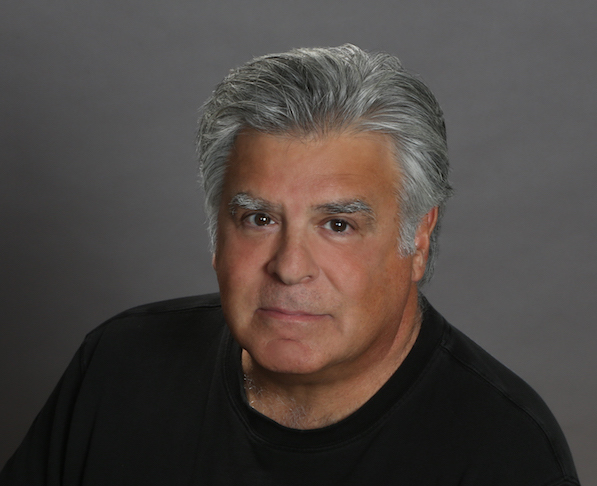
Frank Carollo
The experiment was a success, and soon Frank was scouring the Michigan countryside in search of a suitable wheat raised using traditional, sustainable methods. It wasn’t easy. For decades now, farmers in the state have been incentivized by higher market prices to grow low-protein wheat, which pro-duces a softer flour that works well for making cakes and pastries. Bread, however, requires the higher protein content in a “hard” flour to form the gluten necessary for a loaf’s dense, chewy structure. “A hundred years ago, people grew one kind of wheat and just baked everything with it,” says Frank. “There weren’t any other options. So, you might make bread that’s nutritious and edible, but may not have the volume and the characteristics of a modern bread that we look for, and our customers expect.”
Frank is trying incentives of his own to help convince farmers to grow higher protein wheat for his bread. When he contracts with a farmer, he guarantees a certain return, or price, for the crops in order to offset the risks inherent to growing without chemical pesticides or fertilizers. In many cases, if a farmer has a successful year, it’s likely that other farmers are experiencing the same, and it can actually drive down the price due to market saturation. So, the Bakehouse locks in a fair price ahead of time that’s often better than the market price. If, on the other hand, the farmer has a bad year and his crop fails, Frank’s guaranteed return ensures that the year is not a complete loss for the farmer. In this way, Zingerman’s Bakehouse provides a bit of insurance for local farmers who plant high-quality, yet potentially riskier wheat crops.
And although the search for the right high-protein flour grown in Michigan remains a challenge, there’s evidence that things might be changing as the demand for naturally and locally made bread grows. About nine years ago, the Bakehouse connected with Westwind Milling in Linden, MI, and began buying a small quantity of their organic whole wheat flour. The quality of the flour was very good and the grinding process in the old-fashioned mill left more wheat germ and bran in the flour, instilling a better flavor and texture in the finished bread. A few test loaves later, the Westwind bread was born.
Yet, even working with an established mill like Westwind, regular deliveries of quality organic flour may be difficult to maintain. This can be due to the effects of weather on a grow-ing season, but also because a naturally raised wheat is a bit more delicate than conventional wheat. Westwind Milling grows their grains without the use of synthetic fertilizers or pesticides, so they’re unfortunately more vulnerable to blights or pests. If a crop is so affected, the Bakehouse may not be able to get the Westwind flour. An unfortunate situation, but it’s part of the trade-off for a naturally grown food with better flavor. That means Frank is always on the lookout for other sources that might help fill the gap.
He recently crossed paths with a wheat-grower from the Traverse City area who’s had a very successful year. Last year, the southern end of Michigan’s Lower Peninsula experienced a higher-than-average rainfall in the critical early part of the season. The water saturation created a very hospitable environment for certain kinds of blight, and many farmers saw all of their hard work go for nought. This past year, the Bakehouse had arranged for the growing of seventy acres in Saline, MI, as well as eleven acres in Eaton Rapids, MI. Unfortunately, the crops were afflicted with a blight that left the wheat inedible. In the Northwest region of the state, however, the micro-climate was favorable to the growers and their crop yield was very successful. Frank was given samples of flour ground from the Traverse City wheat, and plans to bake test loaves very soon. He also plans to attend a growers conference in that area to explore the possibility of sourcing wheat from the North.
But simply growing a successful wheat crop isn’t the only challenge. For example, to find good, conventionally grown wheat flour, all Frank has to do is make a phone call to his baking supply company. The company then sources flour from places like Kansas or Nebraska, where the growing season is longer. The flour is milled and stored until it’s ready to be shipped. On the other hand, with Michigan-grown organic wheat the Bakehouse must pay for transportation from the field to a mill, where the wheat is ground into flour. Then they must pay to have the flour stored until its needed, and then pay once again for delivery. In the past, Purity Mills has helped out, but the logistics of this operation are expensive and time-consuming.
Ideally, Frank would like to see a semi-local storage location with a mill in which to process the grains.“A hundred years ago, every town had its own mill, so this wasn’t an issue. You’d simply harvest your grains and drive them to the local mill.” But, as we know all too well, times have changed and the majority of local mills were closed decades ago in favor of large, centralized processing facilities. “If I were still 20,” smiles Frank, “and didn’t have a busy bakehouse to run, I’d love to learn the craft of milling.” He hopes that an enterprising younger person will come along and make this vision a reality. This also fits nicely into his long-term vision for establishing closer relationships with local farmers. “I look forward to the day when we have several breads where we know exactly where the flour comes from – even the field where the wheat was grown – ideally within a couple hours of here.”
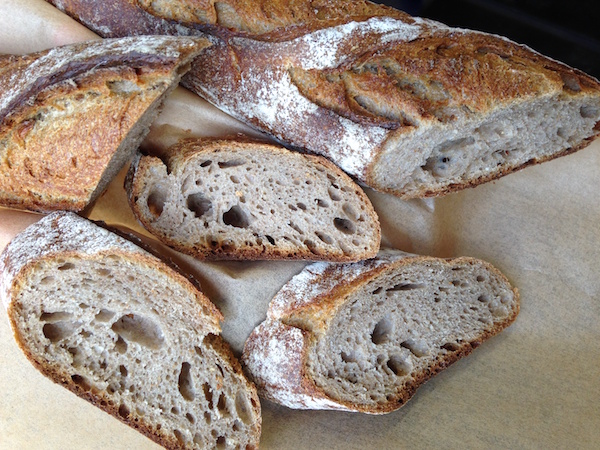
Chestnut Baguette
And Frank has plans for these special wheat flours. We’ve already talked about the delicious Westwind bread, which was the first to use organic wheat flour. Then last year, the Bakehouse debuted another unique bread: the Michigan Chestnut Baguette. Inspired by Zingerman’s Deli chef Rodger Bowser’s work help promote Michigan chestnuts, as well as by the abundance of chestnuts in the Bakehouse Hungarian foods, the Michigan Chestnut Baguette has proven to be a crowd-pleaser of the first order. The recipe calls for chestnut flour from Michigan Chestnut Growers in Grand Haven, MI, as well as wheat flour from Westwind Milling. The result is a lovely bread with a dense tan and purple crumb, and a beautiful dark crust.
And although Frank has a yen for local grains, he doesn’t always mean local to Michigan. Flavor and tradition are a major part of the Bakehouse vision. And this will be evident in the forthcoming Pane Nero bread expected to hit Bakehouse shelves very soon. This traditional Sicilian loaf was first tasted (enthusiastically) by Zingerman’s founder Ari Weinzweig over twenty years ago on a trip overseas, and had achieved an almost mythic quality at Zingerman’s in the ensuing decades. That was until Frank took a trip back to his family’s home-land of Sicily a couple of years back, and happened to meet the owner of Molini del Ponte, Filippo Drago. Molini del Ponte is a traditional mill in Castelvetrano that produces very high-quality ancient whole wheat Durum flour, which just happens to be the primary ingredient in the legendary Pane Nero (“the black bread of Sicily”). The two men talked, and Frank walked away with a couple of pounds of the Durum, and plans to ship more to the Bakehouse. When Frank returned from Sicily, he promptly baked a few test loaves, and Pane Nero came to the Zingerman’s Bakehouse for the first time. The grain of the flour is coarse, and a light, speckled yellow in color. The resulting loaf is dark brown, with a dense, compact crumb and topped with sesame seeds. The bread was met with enthusiastic response among Zingerman’s staff, and guests can expect to see the delicious Pane Nero in Zingerman’s businesses in the coming months.
Although the Pane Nero flour comes from far away, Frank’s dream of a deeper connection to the growers is present in that bread. He can tell his guests exactly where their bread comes from. Frank knows the farmer, he knows the land, and the wheat. He knows the miller, and his methods. In the dream, the bread is a perfect expression of the relationship between the land, and the people who appreciate its bounty.

See you soon!

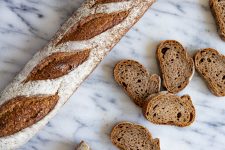
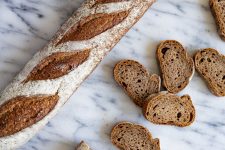
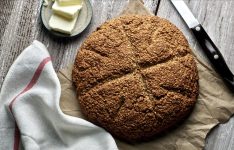
Zingerman’s Art for Sale